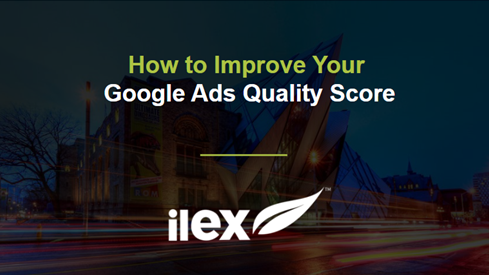One of the ways Google determines how well you’re targeting a potential lead is through Quality Scoring. Your Quality Score is dependent on how Google rates the efficiency and relevance of your keywords and pay-per-click (PPC) ads.
According to Google, your Quality Score is intended to give you a general sense of the standard of your Google ads. Google will give you a score based on how well it believes your content is meeting your audience’s needs. This takes into consideration the quality of your ads, keywords and landing pages and ranks them from 1 to 10, with 1 being a bad match, and 10 being a great fit. A good Quality Score is considered to be between 8 to 10.
When your Quality Score increases, the cost per click will decrease and your ad position will improve. By optimising your score, you will position yourself for higher return on investment (ROI).
We’ve put together our top tips to help you to improve your Google Ads Quality Score and understand the factors to consider.
Tighten your ad groups
One of the factors that determines a good Quality Score is relevancy between search query and your ads. To achieve this, your ad groups should only include keywords that are relevant to your product or services.
An ad group contains one or more ads that share similar targets. Ad groups are used to organise ads by a common theme. Within the B2B telecommunications industry, examples of common themes include ‘marketing’ or ‘technology’. Targeted ad groups allow you to reach a specific and relevant audience which will help improve your click-through-rate (CTR).
Google recommends 5-20 keywords per ad group, however too many broad ad groups can lower your Quality Score. You can avoid this by establishing smaller, tighter ad groups using between 1 and 10 keywords per group.
Use the right keywords
Keywords are the basis of all your paid search activity. Using the correct keywords can determine how many leads your campaign successfully generates.
Keyword research is a useful way to help you to discover new, highly relevant keywords to add to your campaign. Within B2B tech and telecoms, relevant keywords such as ‘telecommunications’ or ‘B2B’ would help benefit the given campaign.
Using Google Analytics is good practice to find the words and phrases that prospects are using to find your ad. It will also provide you with an insight into what keywords are driving the most traffic and conversions.
Use negative keywords
Another way to implement keywords to boost your Quality Score is through the use of negative keywords. Negative keywords are terms you include in your ad group or campaign if you do not want your ad to show in order to reduce unwanted impressions. For example, if your B2B organisation doesn’t offer consulting, you would add terms related to consulting to your negative keywords list.
Including these will help improve your CTR as those that aren’t in your target market will not see your ad. This is beneficial because a high CTR leads to a higher Quality Score.
Create high-quality ads
Ad relevance is one of the three factors identified by Google that directly impact your Quality Score. Your ad should include clear, succinct messaging that allows your audience to understand your offering from the first read.
A high-quality ad will focus on one product or service so that you can successfully target the audience that you want to attract. It will include copy that aligns to your keywords, reflects the messaging that is present on the landing page and includes an impactful call to action. Creating a high-quality ad will increase click-through rates to your landing page.
Optimising Landing Pages
After a prospect clicks on to your ads, they will be directed to the landing page. A good quality landing page will deliver an excellent user experience by being visually appealing, easy to use and navigate.
It is best practice to use the messaging displayed in your ad on a landing page as well to maintain consistency.
Your landing page should also have fast loading times in order to keep your audience interested. According to Ping Dom, an ideal website load time should be no more than 2 seconds. The probability of bounce rate increases by 32% if the page load time increases from 1 to 3 seconds. Every improvement on your landing page will increase your Quality Score.
A good Quality Score will help you grow your business, gain more leads, and save you money. After boosting your Quality Score, it is equally as important you maintain that score once you achieve it. Google doesn’t only look at your current score, but the history of your score over time.
At Ilex, we can help boost your brand and generate leads through Google Ads. We make it simple to accelerate marketing and sales for B2B tech & telecoms companies using content and inbound strategies. We have the experience in creating high quality ads and optimising landing pages.



